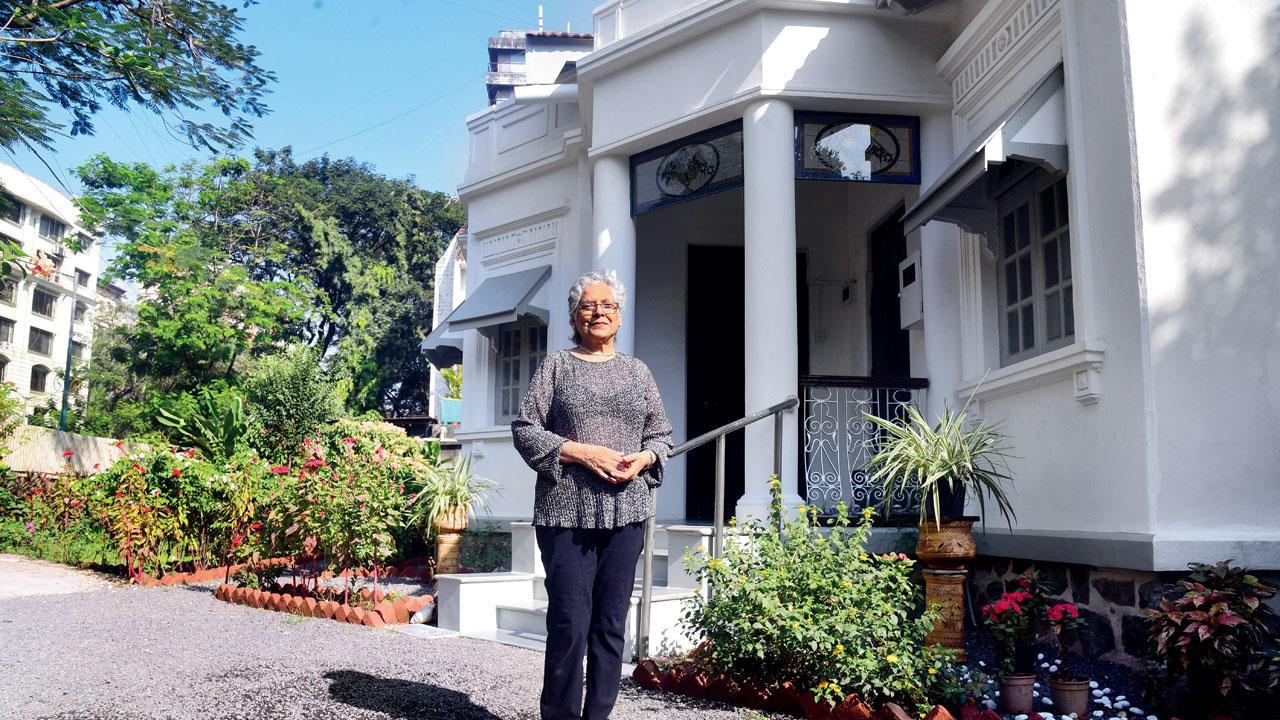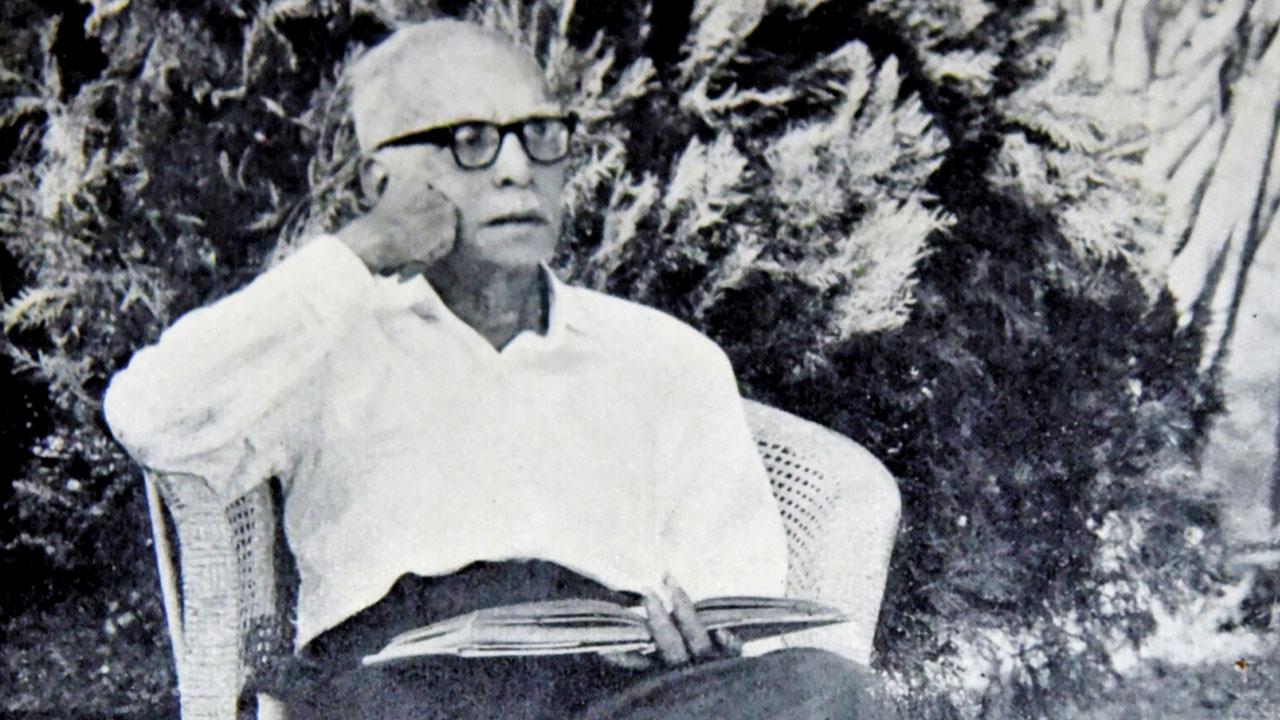Daughter-in-law of late educationist and patriot Prof Aloysius Soares leads initiative to restore 88-year-old Belvedere that became the nerve centre to transform the suburb

Freda Soares stands near the porch of Belvedere, a Grade II A heritage structure, which has been inspired from different schools of architecture
In the mid-1920s, when Bombay was imploding and simultaneously expanding towards Dadar, Matunga and beyond, most of its migrant Catholic population was still living in crammed, crowded neighbourhoods in the south of the city. Around this time, Byculla resident Professor Aloysius Soares, who was part of a Catholic welfare society, was fuelled by a vision. “He and his friends wanted Catholics to move out of the city to a more serene and peaceful surrounding, own property and live in beautiful cottages,” says his daughter-in-law Freda Soares, a pianist. “He started by going house to house, inviting people to the neighbourhood of Chembur.” At the time, Chembur, says Freda, “was a world away from Byculla”. “There was no infrastructure, just vast stretches of farm and forest land.” The welfare society gave Catholics loans to build homes. Prof Soares’ own house, Belvedere, which he built in 1934, and that wore a coat of terracotta paint, became a model project in the small suburb.
ADVERTISEMENT

Architect Rahul Chemburkar
Today, the bungalow, situated at the mouth of the lane leading to Our Lady of Perpetual Help Church, Chembur, is one of the few remaining vestiges of the prodigious educationist, social worker, labour leader, and patriot, instrumental in the Goa Liberation Movement, and who also has a road on the stretch named after him. In a fitting tribute to his life and legacy, his septuagenarian daughter-in-law recently restored the 88-year-old home that had suffered the decay of time, with the help of conservation architect Rahul Chemburkar of Vaastu Vidhaan Projects and Nilesh Thakkar of JCPL. Chemburkar, whose name gives away his association with the neighbourhood, remembers walking to school past Belvedere. In 2005, as a member of the Indian Heritage Society, he finally got to visit Freda and her then late doctor husband, also named Aloysius, after the society presented the bungalow the Urban Heritage Award.
Also Read: Flight mode: Why these Mumbai planespotters are obsessed with aircraft
It was only post COVID that Freda reached out to Chemburkar, requesting if he’d oversee its restoration. The bungalow, a Grade II A heritage structure, has been inspired from different schools of architecture. “It’s a confluence,” shares Chemburkar. “With residential structures, you have the freedom to draw from different elements. The pediment [the top element of a portico] is triangular in shape. The polygonal bay window, which projects out of the structure, is seen in Neoclassical, Bombay Gothic and even Art Deco. There are also elements of vernacular architecture—the slopping roof, for instance, is a recurring feature in architecture of the Western coast.”

Prof Aloysius Soares
When Chemburkar surveyed the site, “the entrance porch leading to the home was in distress”. The pillars had cracked open, and the porch terrace was leaking, due to which the walls were crumbling. “Over the last few years, a lot of incongruous additions and piecemeal repair works were done. Freda had managed to retrieve a tiny photograph, where we could spot some of the original decorative elements,” he shares. Freda adds, “We looked at it with a magnifying glass, and noticed that there were so many details that were missing.” That photograph became a reference image for the restoration project. But we were still required to innovate, he says.
Based on Vaastu Vidhaan’s proposed plan, Thakkar restored the structure using traditional lime plaster, recreating the pediment and other ornate details that once defined the structure. “Lime is always associated with load-bearing, composite structures like this bungalow. Cement, on the other hand, is used in RCC [Reinforced Cement Concrete] buildings,” he explains. “As a thumb rule, it’s important to use the original material. You have to look at a bungalow as a living entity. If a foreign material [in this case, cement] is used, the structure will respond to it differently.” Inside the house too, the walls were lime plastered, and the kadappa stone on the windowsills was polished.
Most of the interventions, however, were made externally. The pillars and terrace were restored. “In the original design, the wooden railings were attached to a pair of pillars, which led to penetration of water, causing severe cracks. We consciously decided to make free-standing railings [detached from the walls]. Similarly, the wooden frame of the stained glass panels above, was suspended from the roof beam with embedded brackets,” he says. Chemburkar also exposed the plinth, which had been previously plastered with cement, to show the original un-coursed stone masonry. “To complete the look, we did lime pointing [a technique used to ‘finish’ the joints between stone or brick masonry with lime].”
While the bungalow is at a lower level than the road on adjacent sides, water doesn’t percolate inside the joints during heavy showers. “That’s because the soil is permeable. It’s why we refused to pave the area,” he shares. Chemburkar has completed the first phase of the project. Next, Freda is planning to restore the section comprising her late husband Dr Aloysius Augustine Soares’s dispensary and retain the white-washed look. “It gleams under the sun,” she smiles.
 Subscribe today by clicking the link and stay updated with the latest news!" Click here!
Subscribe today by clicking the link and stay updated with the latest news!" Click here!







